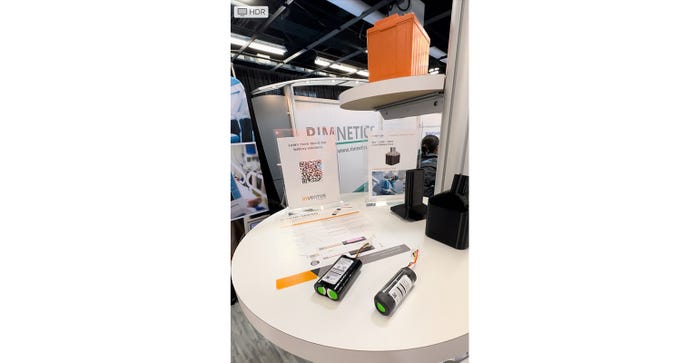Medical Battery Alternatives: Inventus Power CTO’s Insights
Battery maker Inventus Power's CTO explores battery alternatives for medical applications at the Battery Medical Conference.

At the Battery Medical Conference in Anaheim, CA, Chris Turner, Chief Technology Officer at Inventus Power, delivered a presentation titled “Exploring Cell Technology for Medical Applications,” where he gave an in-depth analysis of the landscape surrounding batteries for medical applications, emphasizing the geopolitical concerns and market dynamics influencing supply chains.
Turner noted that electric vehicles (EVs) and energy storage systems (ESS) primarily drive the battery market. Still, there are plenty of opportunities for companies supplying batteries for medical devices. “In the long term, the localization of battery supply will present opportunities for medical device manufacturers as not all cell/battery companies are chasing EV and ESS.”
Lithium price fluctuation and battery technology development
Turner addressed the fluctuation in lithium prices, highlighting its impact on the development of alternative battery technologies such as sodium-ion batteries. He noted that while sodium batteries offer a lower-cost alternative, their progress has been affected by the recent stabilization of lithium prices, slowing down their development and adoption.
He said, “After my trip to China, progress on sodium-ion batteries has slowed somewhat. This is partly due to the significant drop in the price of lithium. Sodium emerged as a promising alternative when lithium prices skyrocketed from $10 per kilogram to $80 per kilogram almost overnight, or at least within a year. This sudden increase made sodium a desirable and cost-effective option.
“However,” he continued, “with lithium prices now back down to around $12 per kilogram, the appeal of sodium has diminished. Despite this, Chinese companies continue to work on sodium-ion battery development, though at a slower pace compared to a year ago.”

Inventus Power batteries for medical devices such as surgical drills. Courtesy of Maria Guerra.
Alternatives to lithium-ion batteries
In discussing sodium batteries, Turner explained their potential for medical original equipment manufacturers (OEMs). Despite slower development, sodium batteries offer a lower-cost alternative that could enhance supply chain resilience and mitigate geopolitical risks associated with lithium-ion batteries. Turner emphasized the safety benefits of sodium batteries, particularly their ability to discharge down to 0 Volts, which could be advantageous for transportation and storage purposes.
“Sodium batteries have the benefit of being able to discharge down to 0 Volts, which I think will be for transportation purposes and maybe storage purposes a big benefit actually for sodium ion, but once it's charged, still seems like there could be potentially some issues that depend a lot on the cathode material.”
He referred to solid-state batteries as the "Holy Grail" of lithium battery technology. This technology could address challenges such as dendrite formation and volatility associated with lithium metal batteries. Turner noted the significant interest in solid-state batteries due to their potential for higher energy density and improved safety. However, he also mentioned the challenges in commercializing solid-state batteries, including manufacturing complexity, scalability issues, and the need for compression in battery packs.
When discussing silicon batteries in the context of alternative battery technologies, he highlighted silicon's potential for higher energy density, which can achieve up to 350 Watt-hours per kilogram and around 1000 Watt-hours per liter. However, he also noted the challenges associated with silicon batteries, particularly regarding managing silicon expansion during cycling, which can impact battery performance and lifespan.
Through his presentation, Turner not only highlighted the importance of strategic investments, diversification of supply chains, and ongoing technological innovation to meet the industry's evolving demands while ensuring safety, reliability, and cost-effectiveness. But he also highlighted the potential for battery design customization to meet medical device manufacturers' specific needs, particularly in larger applications where larger cells could offer increased capacity and performance.
About the Author(s)
You May Also Like





